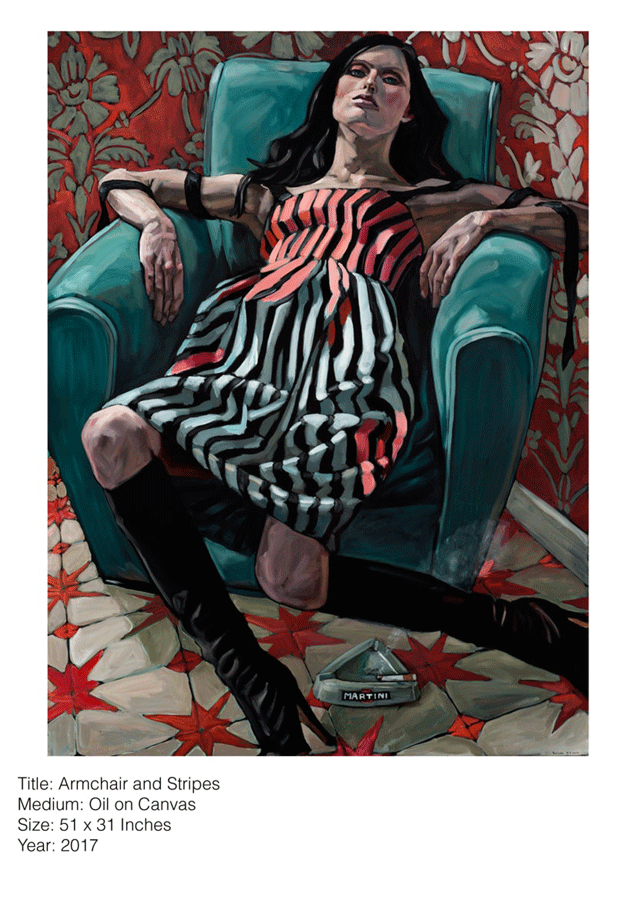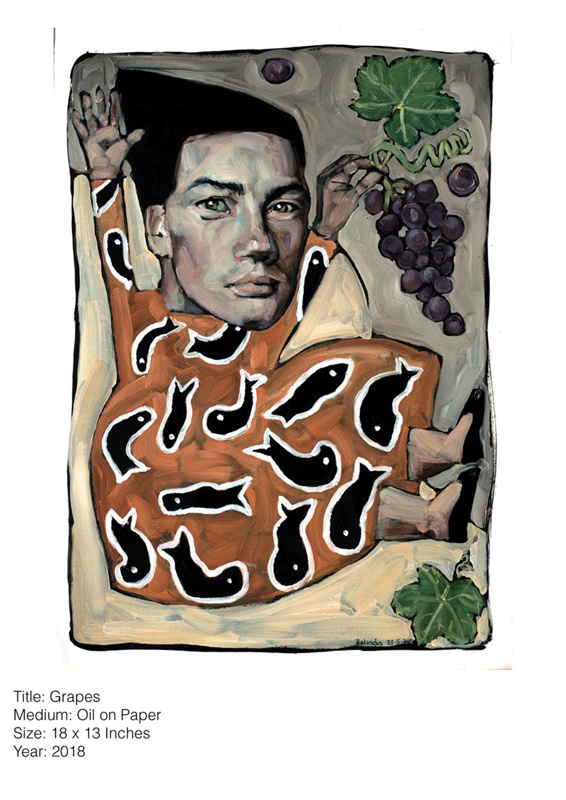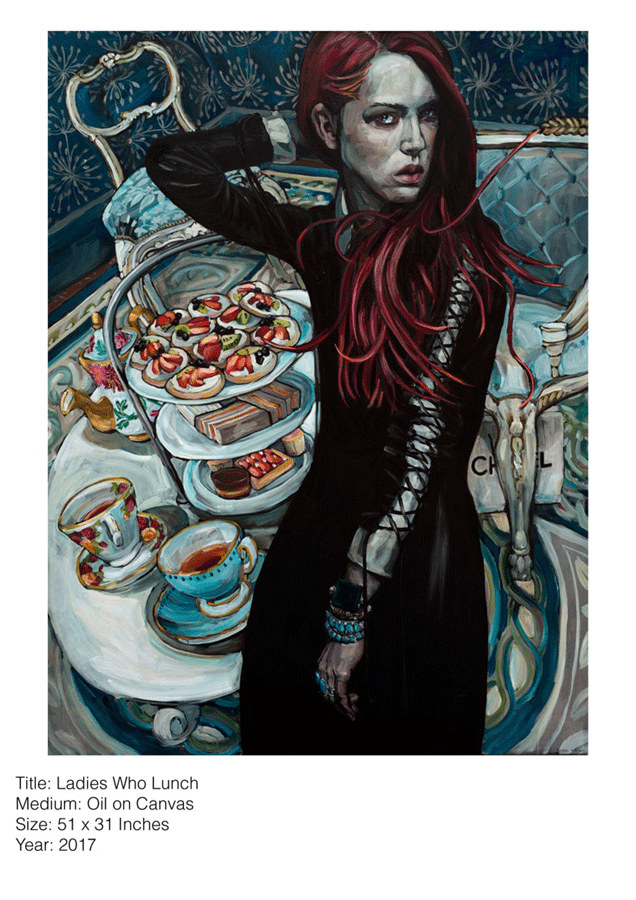Art Review: Belinda Eaton
By Nusrat Khawaja | Art Line | Published 7 years ago

Belinda Eaton enjoys a high-octane relationship with the world she inhabits, and it reflects in her art. Her subject is figurative art. Twenty-two of her recent paintings were on show at Canvas Gallery. Their boldly rendered colours charged the walls with energy.
Eaton’s focus is on portraiture. Each painting depicts a single figure (with the exception of the painting called ‘Twins’) as if caught at a moment when they have temporarily paused in their energetic trajectories to model for the artist. The characters usually gaze frontally from the canvas with a limpid gaze. They are located in an interior space, perhaps a room, a bar or a café. They are young, fit and sexy. Their face gives very little away about their state of mind. They have a strong sense of their own individuality which they convey through their appearance – their hair style, their clothing and the prominent tattoos that decorate their bodies – bodies which are shrines to their youth.
Belinda Eaton ‘energises’ her paintings through surface ornamentation, visible brush strokes and skewed perspective.

All surfaces depicted in her paintings become opportunities for Eaton to create pattern. Tattoos abound on the skin of several models. Chrysanthemums seem to bloom on skin, on clothing and on the walls. Pomegranates, palm and banana leaves, daisies and Agave are among the plant repertoire. In ‘Woman with Cat Tattoo,’ the woman’s skin, her jacket and the wall against which she poses are covered with pattern. The tiled flooring and counter-walls sport geometries of checkerboard squares and starry inlays.
Even though Eaton has depicted interior spaces in her paintings, she wants to pair nature with human existence. Instead of positioning people in the natural world, she brings nature into the domain of human interiors. Besides flowers and foliage, many animals appear: a parakeet, a blue roller and a hoopoe; and other animals such as a dog, fish and horses. The animals are depicted as live creatures or they form the pattern of fabric.
Belinda Eaton’s expressive style tends towards the painterly. The brush strokes are clearly visible and add to the vibrancy of the work. The contours of the faces and the directional light that falls on them are created by laying strokes of varying colours and lengths next to one another. She creates texture in a similar way. In ‘Pomegranate Man,’ the checked pattern of his suit material is meticulously rendered by brush to indicate the creases and folds. In ‘Armchair and Stripes,’ the bold stripes of the woman’s dress cascade like rivulets down her lithe body.

The laws of perspective are playfully distorted in Eaton’s work. Typically, she foregoes foreshortening by collapsing the space between the foreground and middle space on the canvas. This can be seen clearly in ‘Ladies Who Lunch.’ The table, laden with tea and cakes, is tilted to provide a view of the contents. The viewer must submit to the internal logic of the painting. The multiple perspectives within one frame also contribute a feel of movement, lending dynamism to the imagery.
The ratio of positive space (space containing a subject) to negative (empty) space is quite large. This imbalance is ably handled by the artist to contribute to the dynamism of the work. The impact is bold but not overcrowded with excessive detail.
Belinda Eaton is widely travelled and has also lived in Karachi for a short time. She has previously exhibited at several galleries in the city. It is interesting to conjecture on the influences that she has imbibed from the varied traditions of art she has encountered. Arguably, she has synthesised her experience of the world into an exuberant palette of colour and form.


